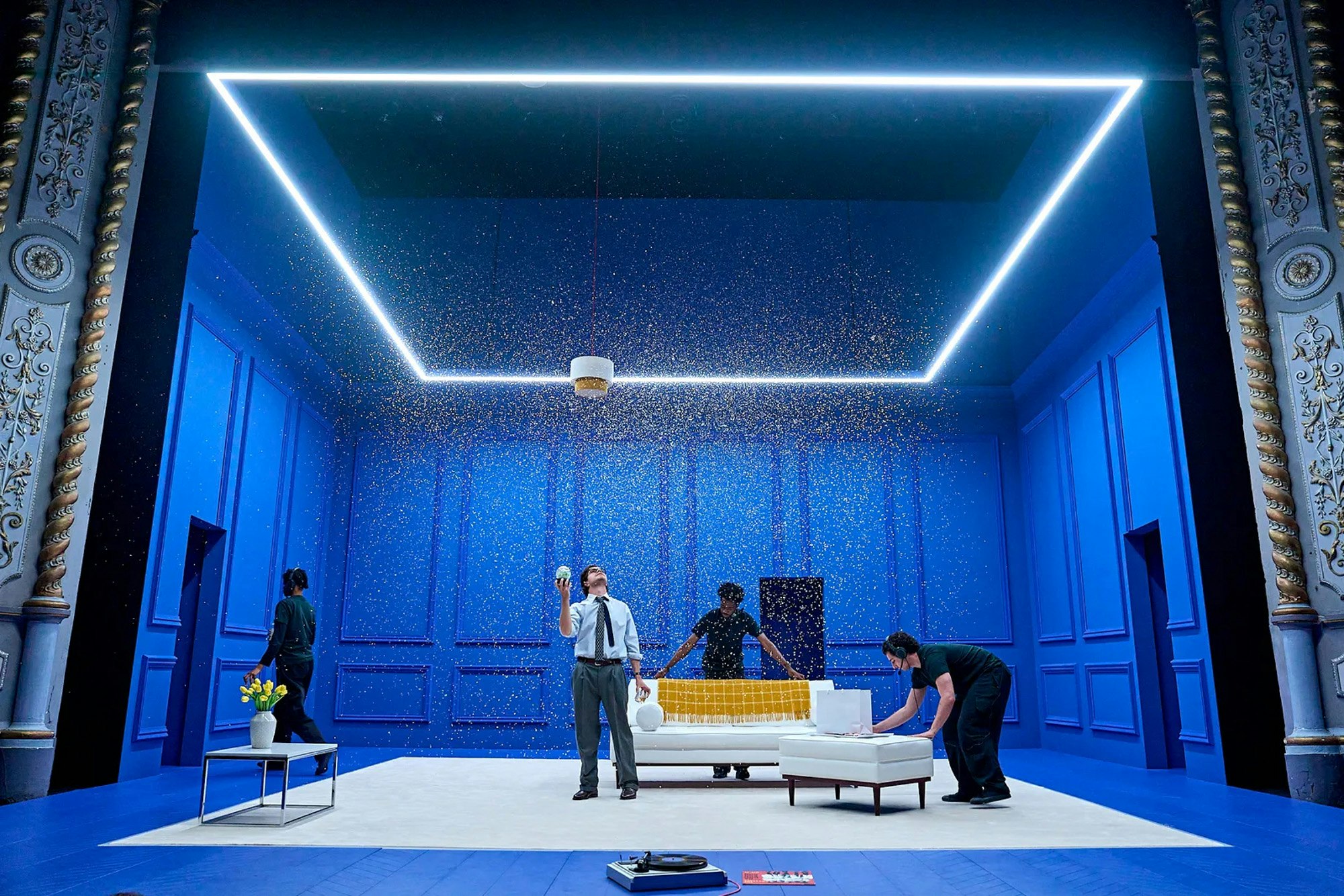This article is taken from the October 2024 issue of The Critic. To get the full magazine why not subscribe? Right now we’re offering five issues for just £10.
Tom Stoppard is the Simone Biles of playwrights: the star performer who has brought more exhilarating twists, puns and dimensions to stage language than any writer since Harold Pinter.
Of his works, The Real Thing is the most complex and twisty in word and deed. Some mental orienteering is required from the audience from the first scene onwards to get a handle on the complex factual and fictional intellectuals in the early 1980s and the multi-layered entanglements of the core quartet.
The Old Vic’s revival under Max Webster’s direction comes more than 40 years after middle-England’s heartthrob Felicity Kendal first starred as the siren Annie, whose serial infidelities obsess her anguished writer husband, Henry.
A host of stage luminaries have since channelled Stoppard’s witty, gritty explorations of the fragility of love and transience of honesty: Glenn Close and Jeremy Irons followed Kendal and Roger Rees in the first Broadway production. Ewan McGregor and Maggie Gyllenhaal were the stellar US-side bohemians in the last successful Broadway production.
This version has a second-tier cast: Max (Oliver Johnstone) is the actor playing opposite Charlotte (Susan Wokoma), in a drama that is written by the latter’s husband, Henry (James McArdle) who is cuckolded by Annie (Bel Powley). Best not try to memorise this deceptive Connect Four of relationships — just get into the flow.
McArdle has the best lines (this is not a play for women saying very much of note) and comes closest to capturing Stoppard’s mental world: a sophisticate beset by uncertainty as to how we know the “real thing” from the dud in a world full of distractions and half-truths. Alas, there’s about as much yearning and sex appeal in their interactions as zing in the synthetic mayonnaise they serve in those 1980s dips.
It is however saved by a neat retro-direction and set — a deconstructed Eighties apartment with the light changing across the day and white square sofas as the era-faithful centrepieces.

Henry’s response to Charlotte’s discovered affair in the opening scene (a confection in itself), is to taunt her in a waspish account of the business trip to Switzerland she never took: “How’s Frank?” As her guilty evasions start to show, he segues into a fast-spinning discussion of the strength of the Swiss Franc and the superiority of Geneva watches. We are safely in the hands of a dialogue master.
The socio-cultural world of the early 1980s here feels as far away as the 1880s were by the roaring 1920s. There’s a modern queasiness about some of the more chauvinist lines about premenstrual women, a daughter who is a Bedales-style punk, mentioning she lost her virginity to a teacher, crashing snobbery about Scotland — a place one just “has” to go to on theatre tours and thus a distraction from “real” life, which largely takes place in London NW3 over buck’s fizz and crudité dips (two compelling reasons not to want to live in the Eighties).
Later, we get a brilliant dissection of what would now be called “Woke” which socks it to the circumlocutions and evasions of ideological boiler-plate language, when Annie is helping a prisoner, Brodie, serving a long sentence for setting fire to a cenotaph wreath, by appearing in his play (another one!) in a fit of political activism. It invites Henry’s wrath — part in jealousy and in part because he cannot stand the posturing prose:
I can’t help somebody who thinks, or thinks he thinks, that editing a newspaper is censorship … or that unpalatable statement is provocation whilst disrupting the speaker is the exercise of free speech.
It is drab anti-Thatcher rhetoric that Stoppard is sending up here, but the critique of Brodie’s tub-thumping style is apposite in the era of social media hyperbole and the neophyte Labour style of Angela Rayner: parading working-class credentials to screen off criticism or questions.
It’s a reminder that Stoppard is unusual in modern theatre in being more aligned to classical liberalism and aspects of conservative thought — the self-realisation of the individual as something worth preserving amidst herd mentalities and censorships — and a sturdy renouncer of communism when too many other intellectuals were apologists or relativists.
Writing itself, its moral conundrums and standards, is the interrogation at the heart of the story — can you have “something to say” (in Brodie’s proto-Corbyn rants) that is not well said, or conversely be a man of fluency piercing in judgement, but unable to act in the world?
We know which side Stoppard is on, but there’s sly judgement too on a literary in-crowd so far removed from the working class that it guiltily champions. The truth of Brodie’s martyrdom turns out very different from the official version, left or right.
At 87, Stoppard’s legacy will surely be his outstanding ability to meld big ideas and stage magic. This revisiting tells us that tastes and styles move fast and furiously, but the substance feels achingly familiar as we look for our own “real things” in politics and life. The fundamental things apply.
Enjoying The Critic online? It's even better in print
Try five issues of Britain’s most civilised magazine for £10
Subscribe



